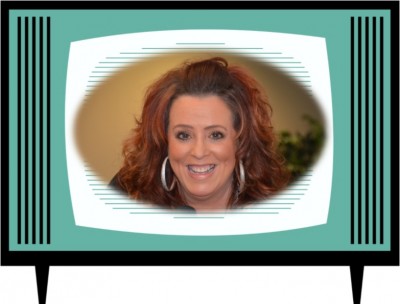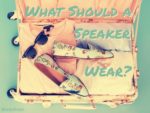Last updated on January 22nd, 2019 at 02:56 pm
Making The Transition From Television to Professional Speaking
Let me begin by saying I know NOTHING about being a television anchor. But I do see a lot of speakers who have entered this business from the world of TV, and I’m seeing a pattern in their mistakes. Here is a tip to help you make the transition from the TV to the platform.
Focus On Connection Instead of Polished
Sometimes when I watch a keynote speaker who has come from the world of television, I feel like the person on stage is the same person I saw on the news. And this is not what I want. I want the person behind the camera. I don’t want the person who says every word perfectly and has her gestures timed and planned. I don’t want arms held out to the side and a smile that never wavers. I want real not polished. I want relaxed not stiff. I want casual not camera ready. I don’t want you to talk at me or out to a camera, I want you to look me in the eye and have a conversation with me. That’s the major difference in where you were and where you are now. You’re no longer coming into my living room on a screen and having a one-sided conversation, you’re stepping into my living room and sitting down on the couch beside me to chat. THAT is who you need to be on stage.
How?
- Make eye contact. Real eye contact. Talk to me, not above my head. Stay focused on me until you finish the thought. You wouldn’t leave me in a conversation in the middle of a sentence. Don’t do it on stage.
- Tell me things about yourself that aren’t perfect – not what you’ve done, but who you are. Admit some flaws and weaknesses. If you look and act too perfect then I can’t really relate to you.
- Don’t be afraid to leave your script for moments of spontaneity and unplanned dialogue.
- Don’t use the same arm position for most of your speech. You start to look like a mannequin. Real people don’t stand that way. Pay attention to your gestures and whether they fit what you’re saying.
- Don’t just pause at the end of sentences. We don’t do that in real life. And it starts to sound memorized. Pause in the middle of your sentence. Look up in the air like you’re trying to think of the next word. Add a couple of words that weren’t on the script – words that answer what you think they might be thinking, even though they aren’t giving you anything to respond to. For example, when I say that my aunt was so cheap she rinsed out her own plastic wrap, I will then look at someone in the audience and say, “I know! Right! Can you believe it!?” One great way to practice this technique of giving a speech like you’re having a conversation, is to force yourself to give your speech to a group of people at a dinner table, where you HAVE to respond to what they’re saying.
- Have the courage to mess yourself up a little. You can still have good hair and makeup, but you don’t always have to stand up so straight. Every once in a while, it’s okay to lean against the lecturn, make a silly face, mess up your words.
When you become real to us, likeable, trustworthy, then we are engaged and believe what you then have to teach.
Kelly Swanson is an award-winning storyteller, comedian, motivational speaker, Huffington Post Contributor, and cast member of The Fashion Hero television show airing on Amazon Prime. She is also the author of Who Hijacked My Fairy Tale, The Land of If Only, The Story Formula, and The Affirmation Journal for Positive Thinking. She was a featured entertainer for Holland America Cruise Lines, keynote speaker for the International Toastmasters Convention, and has keynoted major conferences and corporate events from coast to coast. She just launched her one-woman show Who Hijacked My Fairy Tale in theaters, and it is being booked all over the country. In July of 2022, she was inducted into the National Speakers Association Speaker Hall of Fame.
Note: Articles by Kelly may contain affiliate links and may be compensated if you make a purchase after clicking on an affiliate link.





